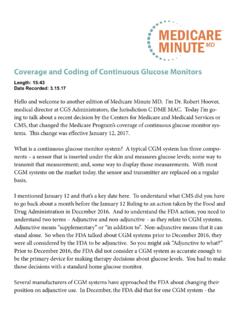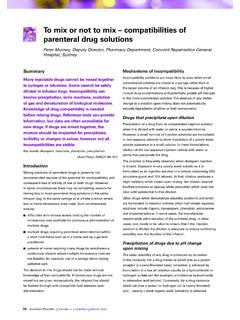Transcription of Maternity and Neonatal Clinical Guideline - Queensland Health
1 Maternity and NeonatalClinical GuidelineQueensland Health Clinical Excellence Queensland Hypertension and pregnancy Queensland Clinical Guideline : Hypertension and pregnancy Refer to online version, destroy printed copies after use Page 2 of 36 Document title: Hypertension and pregnancy Publication date: February 2021 Document number: Document supplement: The document supplement is integral to and should be read in conjunction with this Guideline . Amendments: Full version history is supplied in the document supplement. Amendment date: May 2021 Replaces document: Author: Queensland Clinical Guidelines Audience: Health professionals in Queensland public and private Maternity and Neonatal services Review date: February 2026 Endorsed by: Queensland Clinical Guidelines Steering Committee Statewide Maternity and Neonatal Clinical Network ( Queensland ) Contact: Email: URL: Disclaimer This Guideline is intended as a guide and provided for information purposes only.
2 The information has been prepared using a multidisciplinary approach with reference to the best information and evidence available at the time of preparation. No assurance is given that the information is entirely complete, current, or accurate in every respect. The Guideline is not a substitute for Clinical judgement, knowledge and expertise, or medical advice. Variation from the Guideline , taking into account individual circumstances, may be appropriate. This Guideline does not address all elements of standard practice and accepts that individual clinicians are responsible for: Providing care within the context of locally available resources, expertise, and scope of practice Supporting consumer rights and informed decision making, including the right to decline intervention or ongoing management Advising consumers of their choices in an environment that is culturally appropriate and which enables comfortable and confidential discussion.
3 This includes the use of interpreter services where necessary Ensuring informed consent is obtained prior to delivering care Meeting all legislative requirements and professional standards Applying standard precautions, and additional precautions as necessary, when delivering care Documenting all care in accordance with mandatory and local requirements Queensland Health disclaims, to the maximum extent permitted by law, all responsibility and all liability (including without limitation, liability in negligence) for all expenses, losses, damages and costs incurred for any reason associated with the use of this Guideline , including the materials within or referred to throughout this document being in any way inaccurate, out of context, incomplete or unavailable.
4 Recommended citation: Queensland Clinical Guidelines. Hypertension and pregnancy. Guideline No. Queensland Health . February 2021. Available from: State of Queensland ( Queensland Health ) 2021 This work is licensed under a Creative Commons Attribution-NonCommercial-NoDerivatives International licence. In essence, you are free to copy and communicate the work in its current form for non-commercial purposes, as long as you attribute Queensland Clinical Guidelines, Queensland Health and abide by the licence terms. You may not alter or adapt the work in any way. To view a copy of this licence, visit For further information, contact Queensland Clinical Guidelines, RBWH Post Office, Herston Qld 4029, email For permissions beyond the scope of this licence, contact: Intellectual Property Officer, Queensland Health , GPO Box 48, Brisbane Qld 4001, email phone (07) 3234 1479.
5 Cultural acknowledgement We acknowledge the Traditional Custodians of the land on which we work and pay our respect to the Aboriginal and Torres Strait Islander Elders past, present and emerging. Queensland Clinical Guideline : Hypertension and pregnancy Refer to online version, destroy printed copies after use Page 3 of 36 Flow Chart: Management of hypertension in pregnancy Flowchart: HypertensionsBP 140 mmHg and/ordBP 90 mmHgMaternal investigations and fetal assessmentBirthInpatient or outpatient careWorsening maternal or fetal condition?Isbirth indicated?YesNoNoYesRisk factors for pre-eclampsia Previous history of pre-eclampsia Family history of pre-eclampsia Inter-pregnancy interval 10 years Nulliparity and/or multiple pregnancy Pre-existing medical conditionso Congenital heart defectso Pre-existing diabeteso Renal diseaseo Chronic hypertensiono Chronic autoimmune disease Age 40 years BMI 30 kg/m2 Maternal depression or anxiety Assisted reproductive technology Gestational trophoblastic disease Fetal triploidyMaternal investigations Urine dipstick for proteinuria Spot urine protein to creatinine ratio if.
6 O 2+ or recurrent 1+ on dipstick Full blood count Urea, creatinine electrolytes and urate LFT including LDHF etal assessment #CTG USS for fetal growth & wellbeingInitiate antihypertensivesCommence if: sBP 160 or dBP 110 mmHgConsider if: sBP 140 or dBP 90 mmHg Choice of antihypertensive drug as per local preferences/protocols Oral antihypertensive (initial dose adjust as clinically indicated) Methyldopa 125 250 mg bd Labetalol 100 mg bd Nifedipine (SR) 20 30 mg daily Hydralazine 25 mg bd ^Nifedipine (IR) 10 20 mg bd Prazosin mg bd Clonidine 50 100 micrograms bdIndications to consider birth Non-reassuring fetal status Severe fetal growth restriction Uncontrollable pre-eclampsia Eclampsia Uncontrollable hypertension Placental abruption Acute pulmonary oedema Deteriorating platelet count, liver and/or renal function Persistent neurological symptoms Persistent epigastric pain, nausea or vomiting with abnormal liver function testsOutpatient care If mild-moderate hypertension without preeclampsia Individualise of appointments Consider admission if.
7 Fetal wellbeing is of concern sBP 140 mmHg or dBP 90 mmHg or Symptoms of pre-eclampsia, or proteinuria or pathology results abnormalInpatient monitoring BP 4 hourly if stable #CTG daily Ward urinalysis, as required Maintain accurate fluid balance Daily review (minimum) by obstetrician Normal diet Bedrest is not usually recommended Consider VTE prophylaxisSevere hypertension/pre-eclampsia Multidisciplinary team approach Manage in birth suite/HDU Strict control of BP Maternal and fetal assessments continuous #CTG Consider magnesium sulfate Consider corticosteroids if preterm labour anticipated Strict fluid management FBC, ELFT including urate & LDH Coagulations screen Urine for protein to creatinine ratio Consider transfer to higher level facility.
8 If requiredStabilise prior to birth Control hypertension Correct coagulopathy Consider eclampsia prophylaxis Attention to fluid statusPostpartum Close Clinical surveillance for postpartum hypertension Consider VTE prophylaxis Consider timing of discharge Arrange follow up Maternal screening as indicated ALPS: antiphospholipid syndrome, BMI: body mass index, BP: blood pressure, CTG: cardiotocograph, dBP: diastolic BP, ELFT: electrolytes and liver function test, FBC: full blood count, FHR: fetal heart rate, HDU: high dependence unit, LDH: Lactate dehydrogenase, sBP: systolic BP, USS: ultrasound scan, VTE: venous thromboembolism, >: greater than, <: less than, : greater than or equal to, : less than or equal to, ^Nifedipine formulations available with SAS authority, #interpret CTG with caution when gestational age less than 28 weeksQueensland Clinical Guideline : Hypertension and pregnancy Refer to online version, destroy printed copies after use Page 4 of 36 Flow Chart: Management of eclampsia Flowchart.
9 Control seizuresControl hypertensionFollow resuscitation principlesD DangersR ResponseS Send for Help A AirwayB BreathingC CompressionsD DefibrillationLoading dose magnesium sulfate 4 g IV over 20 minutes via controlled infusion deviceIf seizures occur/ongoing while preparing magnesium sulfate Diazepam 5 10 mg IV at a rate of 2 5 mg/minute (maximum dose of 10 mg) OR Clonazepam 1 2 mg IV over 2 5 minutes OR Midazolam 5 10 mg IV over 2 5 minutes or IMMaintenance dose magnesium sulfate 1 g per hour IV via controlled infusion device for 24 hours after birth Then review requirementIf seizures reoccur while receiving magnesium sulfate Magnesium sulfate 2 g IV over 5 minuteso May be repeated after 2 minutes Diazepam 5 10 mg IV at a rate of 2 5 mg/minute (maximum dose of 10 mg)
10 OR Midazolam 5 10 mg IV over 2 5 minutes or IM OR Clonazepam 1 2 mg IV over 2 5 minutesIf impaired renal function Reduce maintenance dose of magnesium sulfate to g/hour Ongoing serum monitoring Monitor BP and pulse every 5 minutes until stable then every 30 minutes Respiratory rate and patellar reflexes hourly Temperature 2nd hourly continuous ^CTG monitoring Measure urine output hourly via IDC Strict fluid balance monitoring Check serum magnesium if toxicity is clinically suspected therapeutic serum magnesium level mmol/LStop infusion Review management with consultant if: o Urine output < 80 mL in 4 hours












